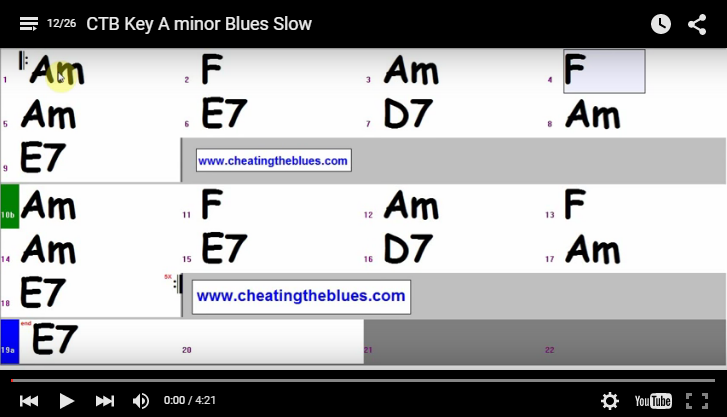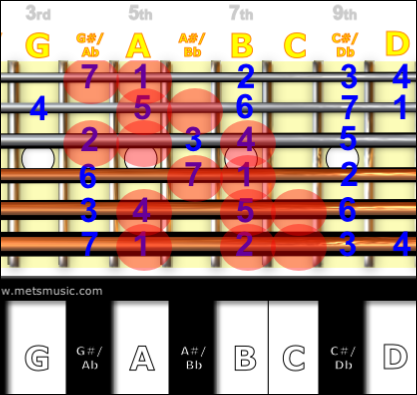


Chrome Browser
Recommended



Open Slide Rulers
Select Pentatonic
Blues Slide Rule





Jam -


INDEX


B -
Use the Slide Rule in the Jam-
A Minor Pentatonic
A Natural Minor (A Aeolian Mode)
A Harmonic Minor

MODULE 6
PAGE 3






M6 -
Dealing with a Minor Chord Progression
A -
B -
A more complex chord progression than a simple basic I IV V Chord progression could be a chord progression that changes Key or is a minor chord progression for example:
Go to Video 12 in the Jam-
Some of the Scales you could use for this are:
A Minor Pentatonic -
To progress even further with you soloing ability you should start using some of the Minor Scales namely A Natural Minor (A Aeolian Mode) -
Use the Slide Rule and plot out the A Natural Minor Scale and Practise this relentlessly
There are two ways to plot this out:
1 -
As explained in the page before in C2
2 -
The Formula is 1-
When you are comfortable with the Natural Minor Scale
Work on the Harmonic Minor, a very valuable scale to know
Slide The Number 1 over the Note of A on the Keyboard and plot out the formula for the Harmonic Minor Scale
The Formula is 1-
Below is an example of one pattern for the A Harmonic Minor Scale

See how I have plotted out one possible pattern for the A Harmonic Minor Scale
The Formula is:
1-
DO NOT RUSH THROUGH THIS IF IT TAKES DAYS OR WEEK THAT IS OK, JUST PRACTICE TILL YOU KNOW THEM WELL
By being proficient with some important scale patterns your ear will develop naturally and your fingers will automatically compensate for notes that do not fit a certain scale pattern.
You start to become intuitive with your playing
C -
These are the Scales you should know now and you want to continually Practice, revise and experiment with them in all Keys
Minor Pentatonic
Major Pentatonic
Blues Scale (This is the Pentatonic patterns with the B Note added)
Major Scale
Mixolydian Mode
Natural Minor (Aeolian Mode)
Harmonic Minor